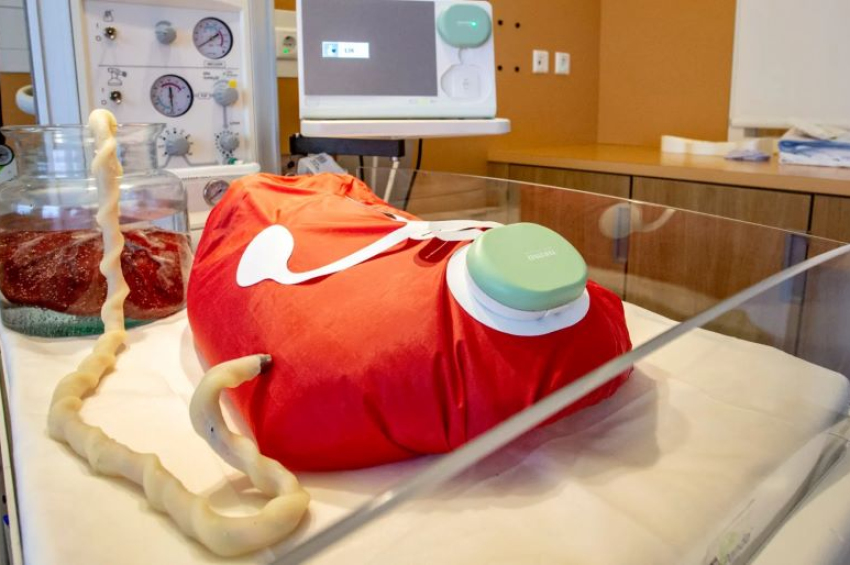Experiments on growing animals in artificial wombs completed successfully
Unlike a widespread general public belief that artificial wombs are designed to gestate babies outside a female body, in reality they serve another purpose, at least for now. The goal is to save the littlest preemies, not replace the uterus.
On 19 September 2023, the U.S. Food and Drug Administration gave its blessing to move research on artificial wombs from animals into humans.
Artificial wombs - experimental medical devices designed for extremely premature infants - aim to provide a womblike environment to enhance their development before entering the outside world. While extensively tested on animal models, particularly lambs and piglets, uncertainties persist regarding the technology's effectiveness in humans.

A lamb grown in artificial womb. Credit: TechnicalReview
The FDA's lead neonatologist, An Massaro, emphasized the challenge of determining the acceptable level of unknowns as the research progresses into human trials.
In essence, an artificial womb is a device, often a clear "biobag," filled with lab-made amniotic fluid, where premature infants can continue development for a few weeks post-birth.
The primary goal is to improve survival rates and reduce complications associated with conventional treatments.
Lung development, a critical factor for premature baby survival, involves filling the lungs with synthetic amniotic fluid, mimicking the in-utero environment.
The EXTrauterine Environment for Newborn Development (EXTEND) is a leading technology, encapsulating the infant in amniotic fluid and advancing toward human trials.
The necessity for artificial wombs arises from the inadequacy of conventional therapies, particularly for infants born as early as 22 or 23 weeks. These infants face challenges related to size, lung development, and increased risks of neurodevelopmental issues, according to research in the journal Nature.
More to read:
Cancer is getting younger: study reveals 79% rise in cases among people under 50
The first human tests involve carefully choreographed cesarean deliveries, followed by immediate tube insertions into the umbilical cord, transferring the baby into the fluid-filled container. Targeting infants with limited treatment options at 22 or 23 weeks, the challenge lies in selecting appropriate candidates, considering varying prognoses, and potential impacts on future pregnancies.
While brain bleeds remain a concern for premature infants, especially with the use of blood thinners, the eligibility criteria for artificial wombs via cesarean delivery raise risks for the pregnant person.
The prospect of growing babies entirely outside the womb faces significant hurdles, both in understanding the intricacies of fetal development and overcoming size-related challenges with umbilical cord insertion.
Ethical concerns abound, from obtaining informed consent to potential misuse of the technology for terminating pregnancies.
The technology prompts questions about the definition of a fetus, a baby, or a newborn, as well as the legal and ethical implications surrounding birth, viability, and a woman's right to choose. As artificial womb technology progresses, addressing these ethical and legal questions becomes imperative to avoid unforeseen consequences.
Although studies on artificial wombs are conducted in the European Union, scientists have yet to get approval for human trials. It is believed that China has also made a significant progress in this direction.
***
NewsCafe is a small, independent outlet that cares about big issues. Our sources of income amount to ads and donations from readers. You can buy us a coffee via PayPal: office[at]rudeana.com.


![[video] Guess who’s hiding more than 8 kilometers below the ocean’s surface?](/news_img/2025/11/13/news0_mediu.jpg)
![[video] Putin rules from shadows: Investigation finds Russian leader rarely works in Moscow](/news_img/2025/11/11/news1_mediu.jpg)



